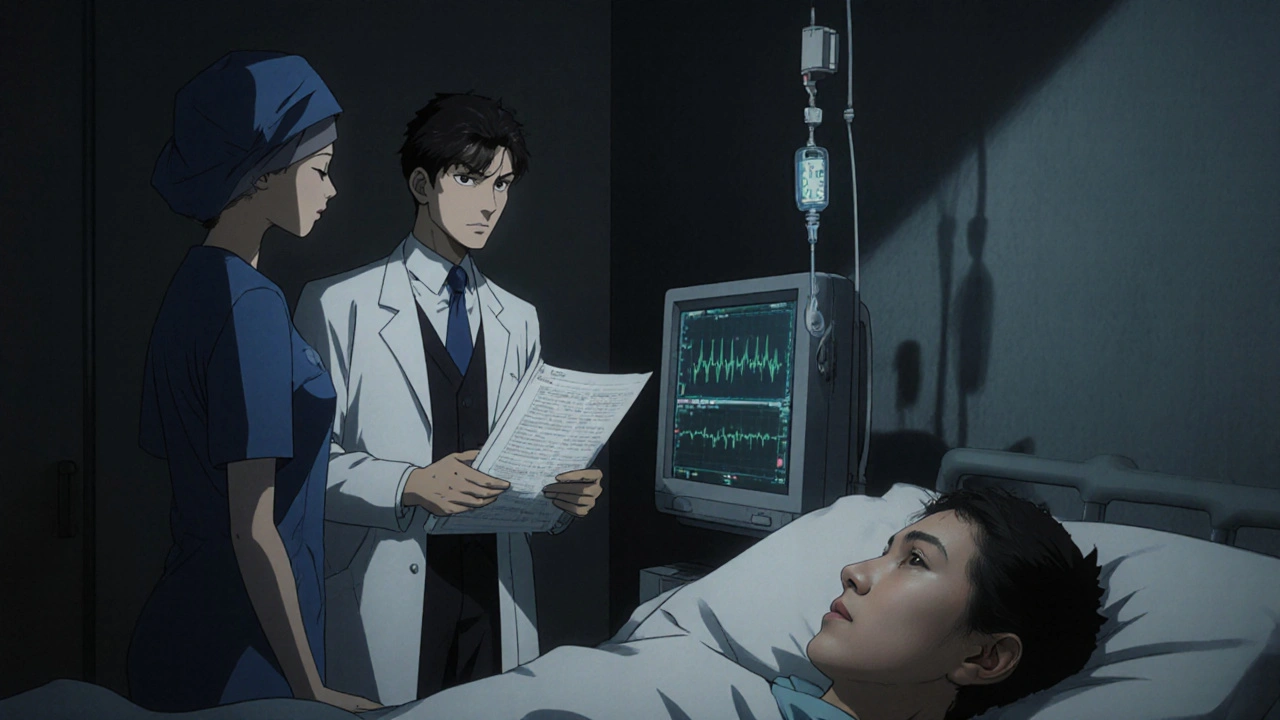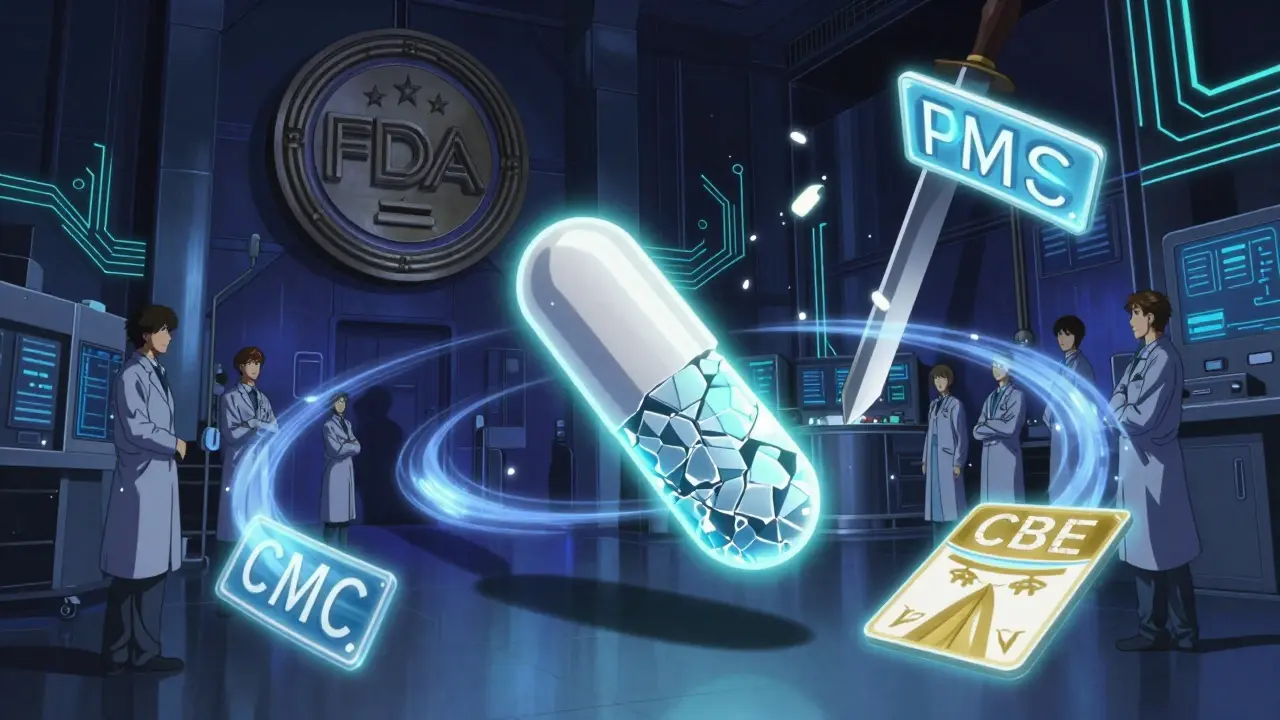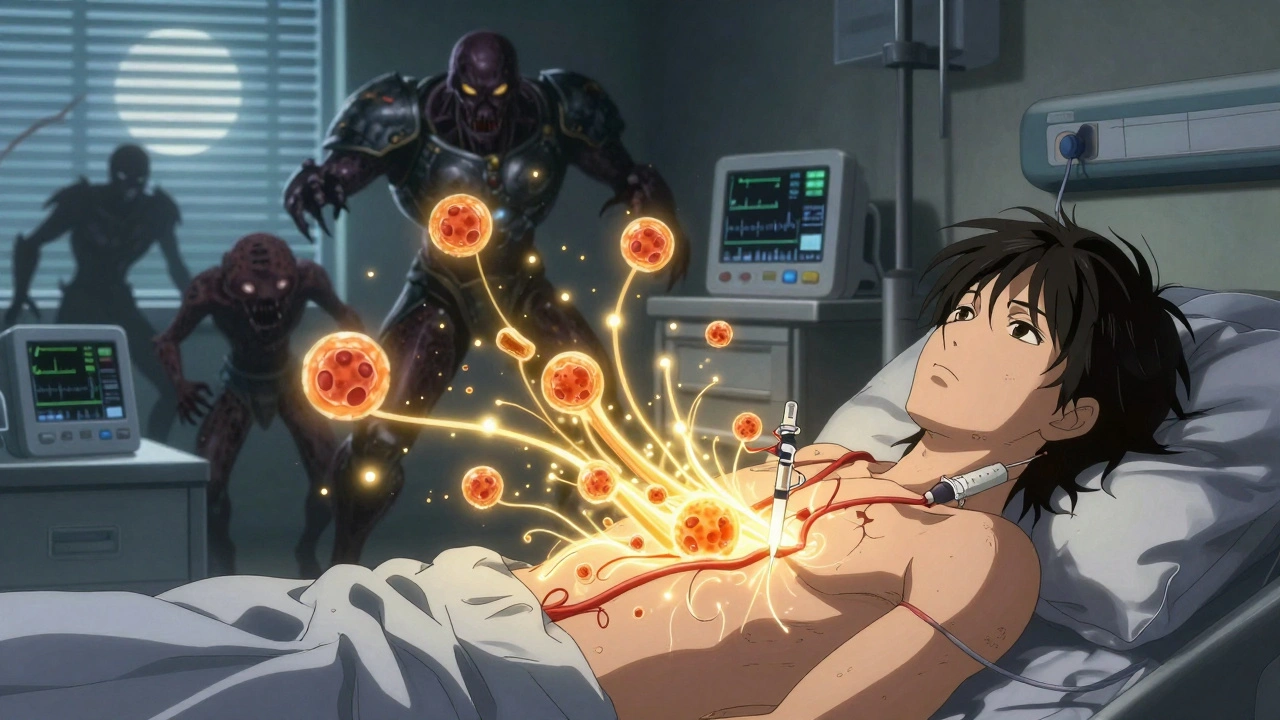Corticosteroid‑Induced Gastric Ulcers: Prevention, Monitoring & Risks

Corticosteroid Ulcer Risk Assessment Tool
Patient Risk Assessment
This tool calculates risk for corticosteroid-induced gastric ulcers based on evidence-based clinical criteria.
Risk Assessment Results
Clinical Guidance
According to recent evidence, routine PPI prophylaxis for all steroid users is not evidence-based. This tool helps identify patients who should receive gastro-protective therapy based on clinical risk factors.
Key Takeaways
- Steroid monotherapy alone carries a low absolute risk of peptic ulcer disease, but the risk spikes when combined with NSAIDs or in hospitalized patients.
- Routine proton pump inhibitor (PPI) prophylaxis for all steroid users is not evidence‑based; target high‑risk groups instead.
- Effective monitoring hinges on baseline risk assessment, symptom checks at every visit, and prompt endoscopy for alarm signs.
- H. pylori testing and eradication, judicious NSAID use, and selective gastro‑protective therapy are the core prevention pillars.
- Implement a simple checklist to standardise prevention and monitoring across outpatient and inpatient settings.
When a doctor prescribes a steroid, the conversation often jumps straight to blood sugar or bone health. Few patients or providers think about the stomach, yet corticosteroid ulcer concerns have lingered for decades. Recent data show the story is more nuanced: steroids alone rarely cause a bleed, but they can turn a harmless irritation into a dangerous ulcer when other risk factors are present. This article walks you through the latest evidence, helps you decide who really needs a protective pill, and gives a step‑by‑step monitoring plan you can use tomorrow.
What the Evidence Actually Says
Corticosteroid‑induced gastric ulcer is a peptic ulcer that may develop in patients taking systemic glucocorticoids, especially when other gastrointestinal risk factors coexist. A 2013 systematic review of randomized trials (Messer et al.) found no statistically significant rise in ulcer rates for steroid‑only patients-incidence hovered between 0.4% and 1.8%.
Contrast that with the Medicaid nested case‑control analysis, which reported a 4.4‑fold increase (95% CI 2-9.7) when steroids were paired with NSAIDs. In other words, the danger isn’t the steroid per se, but the cocktail of drugs that often accompany it.
The BMJ Open 2014 review of over a million participants added another layer: hospitalized patients on steroids had a 40% higher odds of GI bleeding or perforation (OR 1.43), whereas ambulatory patients showed no real uptick (OR 1.05). The absolute risk in out‑patients works out to roughly 0.12 events per 100 person‑years.
Why the discrepancy? Steroids blunt inflammation, which can mask early ulcer pain, and they impair mucosal healing. In a hospital setting, where patients receive high‑dose regimens and often concurrent anticoagulants or NSAIDs, the hidden risk becomes clinically relevant.
Who Is at Real Risk?
Risk stratification is the first line of defence. Use the following checklist before you write a prescription:
- Concomitant NSAID use - the strongest predictor of ulceration.
- History of peptic ulcer disease or gastrointestinal bleeding.
- Positive Helicobacter pylori test.
- Anticoagulant or antiplatelet therapy (e.g., warfarin, clopidogrel).
- Age ≥ 65 years or severe comorbidities (renal, hepatic, cardiac).
- Hospitalisation or intensive‑care admission.
If a patient ticks any of these boxes, they move from “low‑risk” to “moderate‑ or high‑risk” and merit proactive gastro‑protective measures.
Prevention Strategies That Actually Work
Guidelines vary, but the evidence converges on three core tactics:
- Eliminate modifiable risks: Stop NSAIDs if possible, treat H. pylori, and review anticoagulant dosing.
- Selective gastro‑protective therapy: Reserve PPIs or misoprostol for patients meeting the high‑risk criteria above.
- Patient education: Teach patients to report black stools, vomiting blood, or persistent epigastric pain immediately.
Routine PPI use for every steroid user, as highlighted in a 2022 survey of 347 hospitalists (78% prescribed PPIs), lacks solid backing. A Johns Hopkins quality‑improvement project showed that cutting universal PPI prophylaxis cut usage by 42.7% without raising GI complication rates over a year.
Monitoring Protocol - From Baseline to Follow‑up
Below is a pragmatic, evidence‑based flow you can adopt in both outpatient clinics and hospital wards.
| Time Point | Action | Key Indicators |
|---|---|---|
| Baseline (pre‑therapy) | Risk assessment checklist; test for H. pylori; review concurrent meds. | Positive H. pylori → eradicate; NSAID use → consider alternative analgesic. |
| Week 1-2 | Symptom query (heartburn, dyspepsia, melena). If high‑risk, start PPI (e.g., omeprazole 20 mg daily). | New upper‑GI symptoms → consider early endoscopy. |
| Month 1 | Re‑evaluate medication list; check for steroid tapering plan; repeat symptom screen. | Resolution of symptoms → continue monitoring; persistent pain → refer. |
| Every 3 months (if >3 months on steroids) | Lab work (CBC for anemia, basic metabolic panel for electrolyte shifts), reinforce education. | Drop in Hb or new anemia → upper GI endoscopy. |
| End of therapy | Final risk assessment; consider taper‑off PPI if not indicated. | No alarm signs → stop PPI; maintain H. pylori eradication status. |
Alarm symptoms that should trigger urgent endoscopy include hematemesis, melena, unexplained drop in hemoglobin (>2 g/dL), or persistent dyspepsia beyond two weeks despite therapy.

Quick Checklist for Clinicians
- ⦿ Document NSAID use and consider alternatives.
- ⦿ Test and treat H. pylori before starting high‑dose steroids.
- ⦿ Evaluate anticoagulant or antiplatelet overlap.
- ⦿ Assign risk level (low vs. moderate/high).
- ⦿ Prescribe PPI only for moderate/high‑risk patients or when NSAIDs are unavoidable.
- ⦿ Perform symptom check at each visit; educate on alarm signs.
- ⦿ Order CBC and metabolic panel at month 1 and then q3 months.
- ⦿ Reserve endoscopy for alarm features, not routine surveillance.
Print this list, stick it on your clinic board, and watch your PPI prescriptions drop while keeping patients safe.
Future Directions & Ongoing Trials
ClinicalTrials.gov identifier NCT05214345 is currently comparing GI complication rates in high‑dose steroid patients with versus without PPI prophylaxis; results are due late 2024. The American Gastroenterological Association’s 2025 guideline update also plans a dedicated working group on steroid‑related GI risk, signalling that the controversy is moving toward clearer recommendations.
Until those data arrive, the safest bet is a nuanced, patient‑centred approach: identify true risk factors, use PPIs sparingly, and monitor vigilantly.
Frequently Asked Questions
Do steroids cause ulcers on their own?
Most large trials show that glucocorticoid monotherapy carries a very low absolute risk (≈0.5‑2%). The danger rises sharply when combined with NSAIDs or in hospitalized patients.
Should every patient on steroids be given a proton pump inhibitor?
No. Evidence suggests PPIs are only needed for patients with additional risk factors-NSAID use, prior ulcer, positive H. pylori, anticoagulation, age ≥ 65, or inpatient status.
How often should I check for gastrointestinal symptoms?
At baseline, then at the first follow‑up (1-2 weeks), again at one month, and every three months thereafter for longer courses. Any new alarm symptom warrants immediate evaluation.
Is testing for Helicobacter pylori mandatory before starting steroids?
It’s strongly recommended for patients at moderate‑to‑high risk (older age, prior ulcer, NSAID use). Eradicating H. pylori cuts ulcer risk by roughly 50%.
What is the best gastro‑protective drug if a patient can’t take PPIs?
Misoprostol (200 µg four times daily) is an alternative, though it can cause diarrhea and is contraindicated in pregnancy. It’s useful when PPIs are contraindicated or poorly tolerated.






Comments
the sagar
October 24, 2025 AT 22:27Steroids are fine; the pharma lobby is the real ulcer creator.
Grace Silver
October 29, 2025 AT 12:34The checklist feels like a practical compass for clinicians navigating the murky waters of steroid therapy it reminds us that risk is not a binary switch but a spectrum where each patient carries their own set of vulnerabilities we must respect and address without over‑prescribing protective drugs the balance between caution and over‑caution is delicate yet crucial
Deborah Galloway
November 3, 2025 AT 03:40Thanks for sharing such a clear step‑by‑step plan – I’ll definitely print the checklist and keep it on my desk. It’s reassuring to see the emphasis on patient education and targeted PPI use rather than a blanket approach. The reminder to watch for black stools and melena hits home for my practice. Keep the practical tips coming!
Tamara Schäfer
November 7, 2025 AT 18:47I totally get what u mean the checklist is like a map for us docs it shows how every little factor can change the risk level it’s not just about steroids alone but all the meds we pile on top of them also i love the idea of sparing PPIs unless really needed it makes sense to tailor therapy to each patient keep spreading the word!
Max Lilleyman
November 12, 2025 AT 09:54🤔 The data clearly show that indiscriminate PPI use is a waste of resources and adds unnecessary side‑effects.
Brett Witcher
November 17, 2025 AT 01:00While the caution against universal prophylaxis is justified, one must also consider individual pharmacodynamic variability. Not all patients metabolize steroids or NSAIDs uniformly, and this can influence ulcer risk. Therefore, a nuanced assessment remains indispensable.
Benjamin Sequeira benavente
November 21, 2025 AT 16:07Let’s all commit to smarter prescribing! Identify those high‑risk patients, grab a PPI when it truly counts, and watch our patients stay healthier. No more blanket meds – precision is power!
Shannon Stoneburgh
November 26, 2025 AT 07:14Honestly, this “one‑size‑fits‑all” hype is just another marketing ploy. If you’re not at high risk, you don’t need extra pills.
Lennox Anoff
November 30, 2025 AT 22:20In modern medicine we are constantly reminded that every therapeutic decision carries an ethical weight that extends beyond the immediate clinical outcome.
Prescribing steroids without a thorough appraisal of gastrointestinal risk is, in my view, a negligent shortcut.
The literature makes it abundantly clear that the combination of glucocorticoids with NSAIDs dramatically amplifies ulcer risk, a fact that cannot be ignored by any conscientious practitioner.
When clinicians default to blanket PPI prophylaxis they overlook the principle of primum non nocere, potentially exposing patients to unnecessary side effects.
Moreover, the financial implications of indiscriminate PPI use strain healthcare systems already burdened by rising costs.
A disciplined approach that involves risk stratification upholds both patient safety and fiscal responsibility.
The checklist presented in the article serves as a valuable tool, yet it must be applied with genuine diligence.
Each item on that list-NSAID use, prior ulcer history, H. pylori status, anticoagulation, age, and inpatient status-represents a quantifiable factor that can be weighted to arrive at a personalized risk score.
By integrating this score into electronic health records, we can automate alerts that remind prescribers to consider gastro‑protective therapy only when truly warranted.
Such a system would also facilitate audit and feedback, allowing institutions to monitor prescribing patterns and intervene where overuse is detected.
Additionally, patient education cannot be relegated to a footnote; it is a cornerstone of preventative care.
Patients who understand the significance of reporting melena or unexplained anemia are more likely to seek timely evaluation.
The moral imperative, therefore, is to respect patient autonomy by providing them with clear, actionable information.
From a broader societal perspective, responsible prescribing curtails the downstream burden of ulcer complications, hospitalizations, and surgical interventions.
In conclusion, the journey toward optimal steroid use is not a solitary path but a collaborative venture that demands vigilance, evidence‑based judgment, and ethical commitment.
Only by embracing these principles can we truly honor the trust placed in us by those we care for.
Bianca Larasati
December 5, 2025 AT 13:27Wow, what a powerful reminder! Your call for ethical prescribing really hits home. I’m inspired to champion risk‑stratified protocols in my own department. Let’s turn this vision into action and protect our patients together.
Abby W
December 10, 2025 AT 04:34Hey guys, love the deep dive 🙌 but don’t forget the simple things – a quick H. pylori test can save a lot of trouble! 😅 Keep the practical tips coming.
Clinton Papenfus
December 14, 2025 AT 19:40Indeed the integration of concise risk assessment tools within clinical workflows enhances decision‑making efficiency while maintaining patient safety standards.
Zaria Williams
December 19, 2025 AT 10:47i see ur point but honestly many docs still ignore the basics its like they think theyre above the guidelines lol
ram kumar
December 24, 2025 AT 01:54Well, if we keep brushing off the fundamentals, the whole system will crumble-dramatically yet predictably.